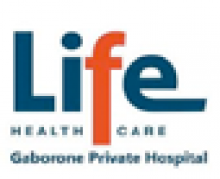A seizure is an uncontrolled burst of activity in the brain.
Summary
A seizure is an uncontrolled burst of activity in the brain. Different kinds of seizure have different effects, from fleeting loss of consciousness to convulsions. First aid centres on removing dangerous objects from around the person, and providing reassurance. A convulsive seizure that continues longer than five minutes, or when consciousness is not regained between seizures, is a medical emergency.
What is a seizure?
A seizure is an uncontrolled burst of activity in the brain. Different types of seizure produce different symptoms, from brief 'blanking out", to convulsions with loss of consciousness and muscle spasms.
Epilepsy is a condition in which seizures recur over an extended period. Most seizures last no longer than a few minutes and end spontaneously, but in some cases emergency help is essential.
What are the signs of seizure?
Seizures are classified according to where they occur in the brain and the signs shown by the affected person.
The following are the signs of some of the more common types of seizure:
- Generalised tonic-clonic seizure: Sudden collapse, unconsciousness, muscle spasm, violent limb jerking. Tongue biting, temporary pauses in breathing, incontinence, vomiting.
- Absence seizure: Loss of consciousness for a few seconds. Person looks blank, stares. Blinks, fidgets, picks at clothing.
- Complex partial seizure: Person appears unresponsive, distracted, "spaced out". Wanders about. Repetitive behaviours, e.g. lip smacking, picking at clothing.
- Simple partial seizure : Jerking of a limb, or an abnormal sensation.
Call emergency medical services if:
Someone has a convulsive seizure and the seizure continues longer than five minutes, or consciousness is not regained between seizures.
First aid for seizure
Generalised tonic-clonic seizure:
- Protect the person from injury. Clear the area of harmful objects. Cradle the head with a pillow. Don't restrain the person's movements.
- Don't put anything into the person's mouth.
- Turn the person onto one side with the head down to allow saliva drainage and prevent vomit inhalation.
- Stay with the person until they are fully recovered. He or she will probably feel very tired for several hours. Muscle aches and headache are common.
Non-convulsive seizures:
Move harmful objects out of the way and gently guide the person out of danger. Be reassuring.
When to call a doctor
Call a doctor without delay if:
- A person has recovered from a seizure but he is not a diagnosed epileptic.
- Physical injury occurred during a seizure.
- The seizure occurred in water.
- A person on anti-epileptic medication feels unwell or has new side-effects.









